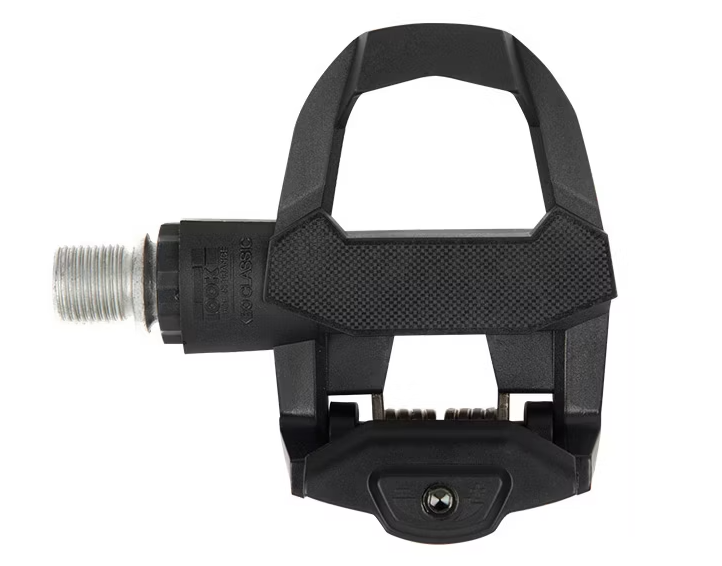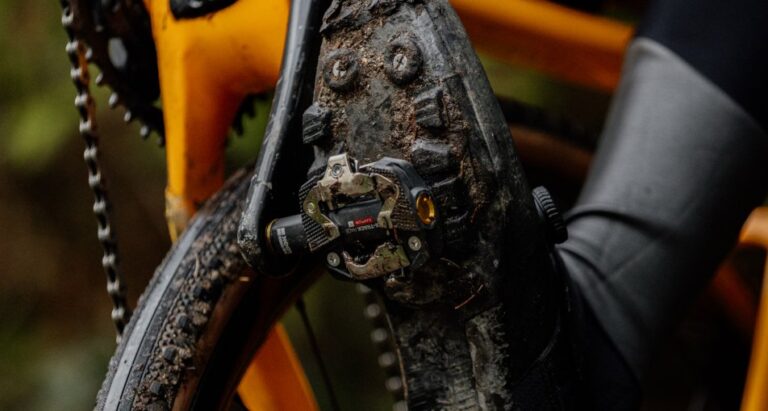Road Bike Pedals Buyers Guide

Key Learnings from this Road Bike Pedal Buyers Guide
- Understand the critical role pedals play in cycling efficiency and comfort.
- Learn the differences between flat and clipless pedals to make an informed choice.
- Gain insights on selecting pedals based on personal riding style and experience level.
- Discover key features to look for in pedals, including cleat compatibility and pedal weight.
- Benefit from personal experiences and anecdotes for practical understanding.
- Acquire maintenance tips to keep pedals in top condition.
- Get guidance on budgeting effectively for quality pedals that match cycling needs.
Hello fellow cyclists! Whether you’re just starting out or have been riding for a while, selecting the right pedals for your road bike is as crucial as picking the bike itself. I’ve been cycling for years, racing and riding across various disciplines including mountain biking, gravel, and cyclocross. Over the years, I’ve learned quite a bit about what makes a great pedal.
Understanding Road Bike Pedals
Road bike pedals might seem insignificant, but they’re your main contact point with the bike. They affect your riding efficiency, comfort, and control. I remember my first road race – I underestimated the importance of good pedals and ended up with sore feet and a less-than-stellar performance.
Types of Pedals
There are mainly two types: flat and clipless. Flat pedals are straightforward, with a broad surface to place your foot. They’re great for beginners. Clipless pedals, despite the name, actually clip onto special cycling shoes. They offer better power transfer and control. I switched to clipless pedals early in my racing days and the difference in my sprinting and climbing was night and day.
Choosing the Right Type
Your choice depends on your comfort level and riding style. For beginners, I often recommend starting with flat pedals to get used to the bike and then transitioning to clipless as you gain confidence and experience. If you’re planning to race or aim for high performance, clipless is the way to go.
Key Features to Consider
- Cleat Compatibility: Make sure the pedal’s cleat system matches your cycling shoes. I learned this the hard way when I bought pedals that didn’t fit my shoes just before a big race.
- Pedal Platform: The size and shape of the pedal can affect your power transfer and comfort. Larger platforms are generally better for power.
- Weight: Lighter pedals can enhance your bike’s performance, especially important in races.
- Tension Adjustment: This determines how easily you can clip in and out of the pedals. Beginners might prefer lower tension for easier release.
Personal Experience Insights
There was this one time during a gravel ride when my pedal tension was set too high. I struggled to unclip quickly and ended up taking a minor tumble. Lesson learned – always adjust your pedal tension according to your skill level and riding conditions.
Maintenance Tips
Regular maintenance is key. Clean and lubricate the moving parts of your pedals regularly to ensure smooth operation. I always check my pedals before a long ride or race.
Budgeting for Pedals
You don’t have to break the bank, but investing in a good pair of pedals is worth it. There are budget-friendly options that are reliable and well-performing. Remember, good pedals can last years.
Conclusion
Choosing the right road bike pedals is a mix of personal preference, riding style, and experience level. Whether you go for the simplicity of flat pedals or the efficiency of clipless, make sure they fit your needs and budget. And don’t forget – comfortable feet lead to a happier ride!
Happy cycling, and remember, the right pedal can make all the difference in your ride!
Top Road Bike Pedal Manufacturers
FAQ’s
How do I choose a road bike pedal?
Choosing the right road bike pedal is an important decision that can affect your comfort, efficiency, and overall riding experience. Here’s a guide to help you make an informed choice:
Determine Your Riding Needs and Style
- Competitive Racing: For racing or serious road cycling, look for lightweight, high-performance pedals with good power transfer.
- Leisure or Endurance Riding: If comfort and ease of use are priorities, consider pedals with a bit more float to reduce stress on your knees.
Select the Type of Pedal
- Clipless Pedals: The standard for road bikes, they allow your shoes to clip into the pedals for efficient power transfer and better control.
- Flat Pedals: More suitable for casual riders who prefer the ease of not being clipped in, although less common in road biking.
Consider Cleat and Pedal System Compatibility
- Cleat System: Most road bike pedals use a three-bolt cleat system, but some use a two-bolt system. Ensure compatibility with your cycling shoes.
- Popular Systems: Systems like Look Keo, Shimano SPD-SL, and Time offer different characteristics in terms of float and engagement.
Look at Pedal Platform Size and Material
- Platform Size: A larger platform can provide better foot stability and power transfer.
- Material: Carbon fiber is lightweight and stiff but more expensive, while aluminum is more affordable and offers good performance.
Check for Weight
- Lighter pedals are generally preferred in road cycling for speed and efficiency.
Understand Float and Tension Adjustments
- Float: The degree of lateral foot movement allowed by the pedal. More float can be comfortable for long rides.
- Tension Adjustment: This determines the ease of clipping in and out of the pedals. Lower tension can be beneficial for beginners.
Evaluate Maintenance and Durability
- Pedals that are easy to maintain, with sealed bearings, typically last longer and perform better.
Consider Your Budget
- Pedal prices vary widely. It’s important to balance your budget with the features and performance you need.
Test and Personal Preference
- Testing different pedals or seeking recommendations can be very helpful. Personal preference plays a significant role in what feels best.
Conclusion
Choosing the right road bike pedal involves balancing functionality, comfort, your cycling goals, and budget. Whether opting for performance-oriented or comfort-focused pedals, the right choice will contribute to a more enjoyable and efficient riding experience.
Road Bike Pedals Buyers Guide-How do I know if my bike pedals are 1 2 or 9 16?
Determining whether your bike pedals are 1/2 inch or 9/16 inch mainly depends on the type of bike and the crankset. Here’s how you can find out:
1. Check the Bike Type
- 1/2 inch Pedals: These are typically found on older or low-end bikes, particularly those with one-piece cranksets. One-piece cranks are often seen on older BMX bikes, kids’ bikes, and some cruiser-type bikes.
- 9/16 inch Pedals: Most modern bicycles, including road bikes, mountain bikes, hybrids, and higher-end BMX bikes, use 9/16 inch pedals. These are found on bikes with two or three-piece cranksets.
2. Inspect the Crankset
- If your bike has a three-piece crankset (where the crank arms are separate pieces that bolt to the crank), it’s almost certainly a 9/16 inch pedal thread.
- One-piece cranks (where the crank and the bottom bracket spindle are a single piece of metal) usually use 1/2 inch pedals.
3. Measure the Thread Diameter
- If you’re unsure, you can remove the pedal and measure the diameter of the thread (the part that screws into the crank arm). Use a caliper for precise measurement.
- A 1/2 inch thread will measure approximately 12.7 mm in diameter, while a 9/16 inch thread will measure about 14.3 mm.
4. Consult the Pedal or Bike Manual
- If you have access to the manual for your pedals or bike, it should specify the pedal thread size.
5. Check with a Bike Shop
- If you’re still unsure, your local bike shop can quickly determine the pedal size for you.
Remember
- Pedal threads are specific and not interchangeable between 1/2 inch and 9/16 inch. Using the wrong size can damage the crank threads, which can be costly to repair.
Conclusion
Most adult bikes use 9/16 inch pedals, while 1/2 inch pedals are less common and generally found on bikes with one-piece cranks. It’s important to confirm the correct size before purchasing or changing pedals to avoid damage to your bike.
Road Bike Pedals Buyers Guide-How do I choose new bike pedals?
Choosing new bike pedals involves considering several key factors based on your bike type, riding style, and personal preferences. Here’s a guide to help you decide:
Determine Your Riding Style and Needs
- Road Cycling: If you’re into road biking, lightweight and efficient clipless pedals are the norm. They offer better power transfer and a secure connection to the bike.
- Mountain Biking: For mountain biking, choose between flat pedals for better control in technical terrains and clipless pedals for improved efficiency on climbs and longer rides.
- Commuting or Casual Riding: Flat pedals or pedals with toe clips are practical for commuting or casual riding as they don’t require special shoes and allow for easy on-and-off.
Consider the Type of Pedal
- Flat Pedals: Good for beginners and casual riders. They’re versatile and don’t require special shoes.
- Clipless Pedals: Lock your foot in place for better efficiency. Different systems (like SPD, Look, or Time) have unique characteristics, so ensure compatibility with your shoes.
- Hybrid Pedals: Combine features of both flat and clipless pedals, offering versatility.
Check Compatibility with Your Bike
- Most adult bikes use pedals with a 9/16-inch thread, but some older or lower-end models might use a 1/2-inch thread. Ensure the pedals are compatible with your bike’s crank arms.
Evaluate Material and Weight
- Pedals come in materials like plastic, aluminum, and carbon fiber. Lighter materials are typically more expensive but offer performance benefits. For casual use, heavier, more durable materials might be more appropriate.
Consider Your Shoes
- If choosing clipless pedals, you need shoes compatible with the pedal’s cleat system. For flat pedals, any shoe will work, but those with a flat, stiff sole provide better performance.
Think About Comfort and Ergonomics
- Some pedals offer a wider platform or more grip, which can be more comfortable and efficient. If you have specific ergonomic needs, like knee or foot alignment, look for pedals that offer adjustability.
Safety Features
- Reflectors or lights for visibility can be important if you often ride in low-light conditions. For clipless pedals, adjustable tension settings can make clipping in and out easier, which is particularly beneficial for beginners.
Budget Considerations
- Pedals range from very affordable to quite expensive. Consider how much you’re willing to invest based on the frequency and intensity of your biking.
Test and Personal Preference
- If possible, try out different pedal types to see what feels most comfortable for your riding style. Personal preference plays a significant role in the ideal pedal choice.
Conclusion
Choosing the right bike pedals involves a balance between functionality, comfort, your biking habits, and budget. Whether you opt for flat, clipless, or hybrid pedals, the right choice will depend on your specific cycling needs and preferences.
Road Bike Pedals Buyers Guide-Do expensive pedals make a difference?
Expensive pedals can make a difference, particularly for avid cyclists or those who prioritize performance, but the significance of this difference depends on various factors:
Performance and Efficiency
- Higher-end pedals often provide better power transfer and efficiency, crucial for competitive cycling or rigorous road biking.
Material Quality and Durability
- Expensive pedals are usually made with high-quality materials, enhancing durability and strength. This is vital for enduring demanding cycling conditions.
Weight
- Lighter materials like carbon fiber, often used in more costly pedals, reduce the overall bike weight, a significant factor for racing or long-distance riding.
Bearings and Smoothness
- Superior bearings and craftsmanship in pricier pedals contribute to smoother operation and extended lifespan.
Maintenance and Serviceability
- Higher-priced pedals may offer easier maintenance options, such as replaceable parts, potentially making them more cost-effective over time.
Comfort and Ergonomics
- More expensive pedals might offer better ergonomics and comfort, important for long rides and cyclists with specific biomechanical needs.
Cleat System and Engagement
- Advanced cleat systems in expensive pedals can provide more secure and precise engagement, enhancing both performance and safety.
Conclusion
While expensive pedals offer advantages in quality and performance, the value of these benefits varies based on individual needs and cycling level. For casual or recreational cyclists, mid-range pedals might be sufficient, offering necessary functionality without the high cost. It’s crucial to weigh the cost against the actual benefits based on your riding style, frequency, and desired cycling improvements.





